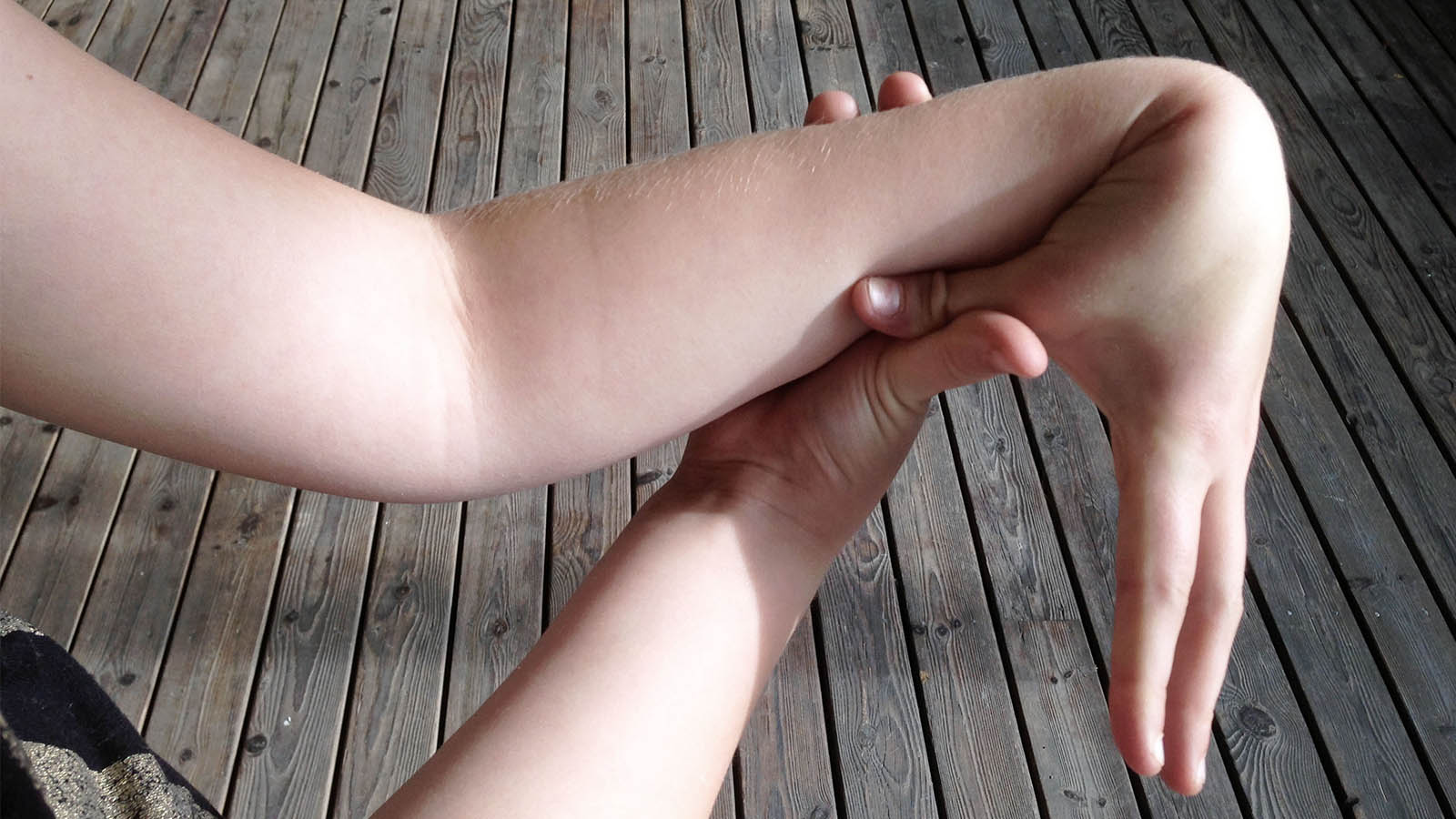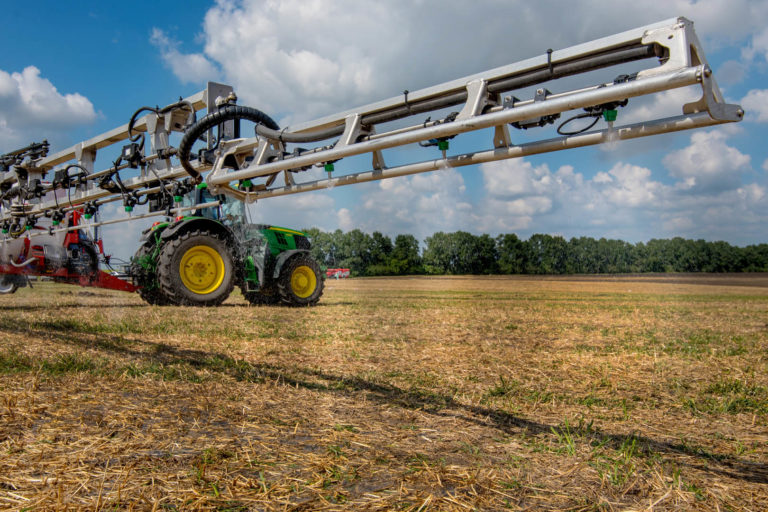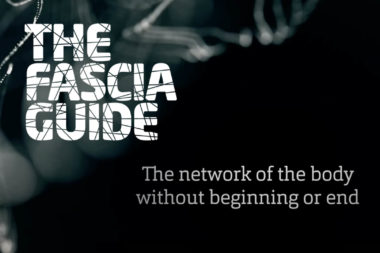

Hypermobility
Thoughts from therapist Märta Lindqvist 2015-09-09
A correlation that becomes clear when working with treatments for a long time, is that the most difficult people to treat are generally hypermobile.
That is, the connective tissue is too soft and has too little collagen. That makes for a loose connective tissue structure, which weakens the body since the fascia is what holds together and stabilizes the body. Even internal organs become soft and permeable.

Many hypermobile people have stomach issues, weak metabolism and are generally fragile in the musculoskeletal system. The relationship may not be fully proven, but many claims to have all of these problems simultaneously, so the relationship is. Hypermobile people (including horses) build up enormous tension in their muscles that give painful tension in the joint, and they often get nerves pinched.
Hypermobility is hereditary and usually one parent and in turn, his or her parent has the one and the same movement. I’m hypermobile, my daughter, father, and grandmother as well. Grandma has replaced many joints and suffered from a herniated disc, lumbago and joint pains throughout her life. She still could still bend and put down her palms on the floor all the way into her eighties. Dad has had regular back pain and tense muscles as long as I can remember and like me, he must stay smooth by constant stretching, movement, and maintenance of muscles. My daughter twists ankles and gets short calf muscles that pull on the Achilles tendon. It starts early, she is ten years old.
One part in feeling better might be to increase collagen deposition in the connective tissue. A natural thing that can help is the dietary supplement MSM – organic sulfur. Read from the can:
MSM is a macro mineral that is an essential component of the proteins collagen and keratin, which builds among other things cartilage, tendons, brain, connective tissue, muscles, and bones.
A further help for painful deep tensions is deep wave treatment that accesses to loosen the completely overworked muscles closest to the joints and spine, which regular manual therapy cannot release.
I have had all variations of clients over the years. Some have become skewed from sitting in a tractor and looking over their shoulder for the whole summer. Others have fallen and stretched a shoulder, or have worked a long time with one-sided tasks and gotten hurt.
Some have a local hypermobility due to injury, and it is something you might have to live with, but my belief is that the body can restore most of the time just to help the little along the way.
What was clear is that those who had pain their whole life, ever since adolescence, those who have been told they have bad posture and should stretch, those who fought on with the training, but got so extremely sore the days after that they have mostly stood still at square one when it comes to strength and fitness – their foundation is hypermobile, in its entire structure.
Those who are not hypermobile are often fine after a few treatments, it is more difficult for those with softer connective tissue.
When I say that most react with “nooo, I am really stiff! I can barely put on socks after all! I was always the tensest in my class “.
That right there IS the sign of soft connective tissue. Where the structure that holds up the whole person, which the skeleton is attached to, which holds together and protects, what we mostly consist of, when it is too loose and soft muscles become stiff. We become exhausted by the usual chores. What a person with normal mobility can work with the whole day makes the hypermobile exhausted after a few hours. Often it is really stubborn people who want to do more than the body can handle and keep working anyway, with the result that the body builds up a high tension in the stabilizing muscles to cope with the task.
The hypermobile get like a “second skeleton” of taut and stiff muscles around the most exposed parts. Those who sit at the counter in the ICA supermarket get a concrete neck. Whoever works on factory floor might suffer compact tension in the hips and calves. Whatever one does, the body will not function as it should, or as you want it to!
Lockups are created when the joint surfaces are pressed together by high muscle tone. The joint surfaces stick together when the joint fluid does not fit. It starts to creak at the joints. They wear out, the joint becomes inflamed, doctors often finds a change in the joints on X-ray in the end, in the worst case joints have to be replaced. If you add a high degree of inflammation the sensitive joints are prone to suffer from osteoarthritis and become worn.
It locks together and hurts. Most learn to “break” their own locks, or go with a chiropractor who can break loose what has locked up. It becomes a bit of a perpetual process. Sometimes it takes an hour after a treatment before a tight neck or lumbar vertebra locks up again.
Most hypermobile individuals have eaten lots of painkillers and/or explored and tried every method and the therapist they can find.
The solution is partly to loosen the deep tensions and the best that I have gotten to try so far deep wave treatment. It goes through the body’s defenses and gently shakes loose the muscles and tissues that have given up long ago.
The second solution is to add collagen and keratin to connective tissue. The best I have tried so far is MSM! Some may experience a too rapid increase of the supplement. One should start with a low dose and slowly get it into the body at a higher and higher dose until the body has found its balance.
If collagen production increases, the connective tissue (fascia) firms and alleviating the problems as close to the original problem I can think it is possible.
Training-wise, it is important to keep going and move with variation, with rest in between. But ideally, avoid very long hours. Muscles need to be maintained but also be allowed to rest and stretch out, to cope up for the weak foundation -fascia.
As long as you are only working with the symptom, it is never sustainable results.
Hypermobility – update
Another day at the massage table and two out of five customers with clear symptoms of hypermobility…
I feel like I meet so many hypermobile people, maybe because I am a therapist, and they have constant pain and tension that they need to find relief for.

Those who do not work therapeutically or have made the connection might think it sounds unreasonable to see that many people with hypermobility. But that’s just because these people (myself included) had problems and pains in the body since their teens. In books on manual therapy and physical therapy, they tend to be cited as the “impossible” and “hopeless” cases…
Today there was a woman who went on many treatments. If I compare with others she has all the symptoms of EDS, Ehlers Danlos syndrome. It simply means that the connective tissue is loose and contains too little collagen. The skin is velvety soft and all the joints can bend abnormally and provides minimal resistance when flexing them and falters in the spine.
It is a sliding scale with the fascia’s firmness. There is absolutely no black or white, healthy or sick. It is not ill until someone perceives it as ill. The connective tissue, fascia, is simply extremely soft. It does not hold together all the parts that it would have to do if the person in question was able to do what a person is expected to do.
Paradoxically to do nothing is often worst. Sitting in the classroom. Sitting at a computer, to stand for a long time, prolonged sitting. That which the connective tissue should hold up must be sustained by pure muscle power, and it requires very strong muscles and working with the body to fix it.
Next was a man, he had been in pain since the age of fifteen. Always cracked his neck since it locked up all the time. He had finally developed burdening on a nerve root and had neck surgery. It was not much better. Two years he had been home with a support collar and has been unable to do anything. Now he struggling to get started with his favorite exercise, jogging. But the head feels heavy and his neck hurts. Pain radiates from the hip and the body does not respond to training.
He was completely locked up in his deep musculature and especially where there was the most pain. Now the second treatment, he said that it felt like a big relief the first few days after the first deep wave treatment, but after training was tension and pain creeping back. It is quite typical.
The therapists who encounter these customers should learn to recognize these symptoms so they do not lose the confidence to do their best, but are not able to remove the problems. To really feel good one needs a few things. The desire is that it should be possible to build stability in the fascia and ligaments, it might work. Hope so!
Then you have to work out with preciseness, quite intense, but brief workouts with rest in between. The muscles need to be woken up, strengthened, but not fatigued. Rest is a must. But do not become too sedentary and stuck together. Making short hearty workout / shifts with rest in between is good.
Anti-inflammatory may be needed to be able to move and release some cramps.
Stretching to get as good mobility as possible in the tired muscles. But when locked up completely, you may need treatment or training first in order to get the right structures to loosen and stretch. You do not want to tear the ligaments and tendons, but stretch the muscles that are shortened.
Magnesium supplementation is needed most of the time, it is probably the most common deficiency. Magnesium controls the energy processes, maintains normal muscle and nerve function and provides mental and physical relaxation.
Since it may be that the connective tissue is strengthened by organic sulfur, MSM which builds up the deposition of collagen and keratin. Even vitamin C is needed for the storage of collagen in the connective tissue. I will do some amateur research on it and will return! Fingers crossed!
You who happily fall under the category of normal mobility might have some use of the tips as well.
With regards Märta


































































